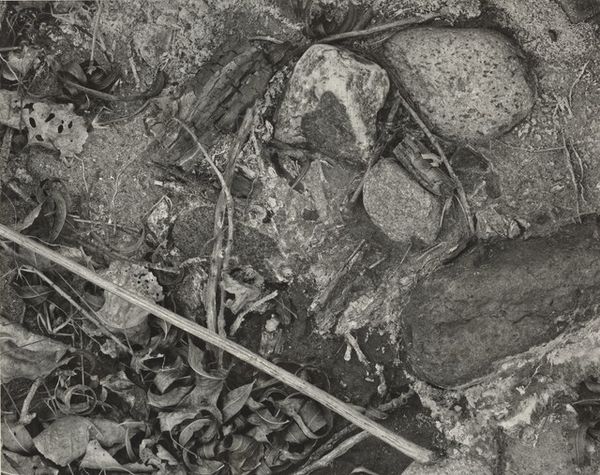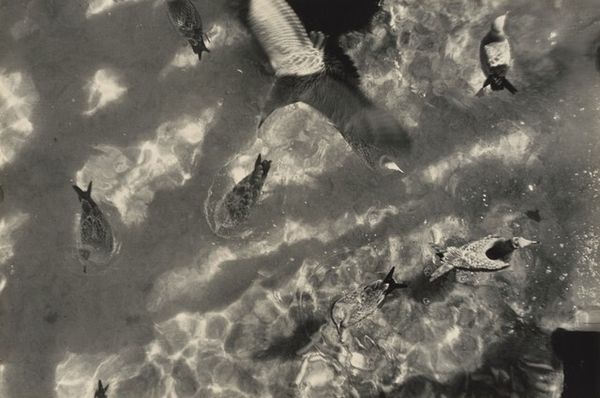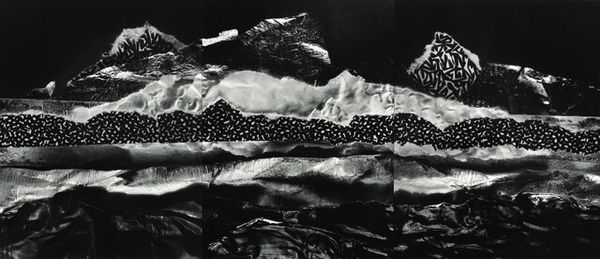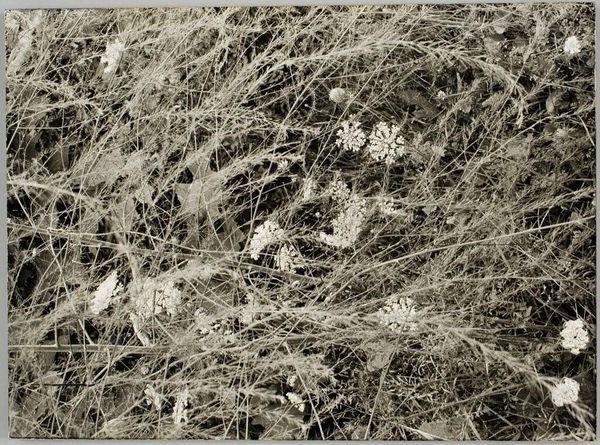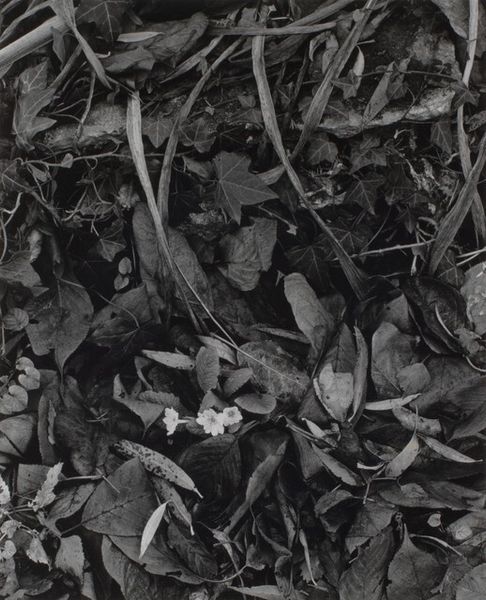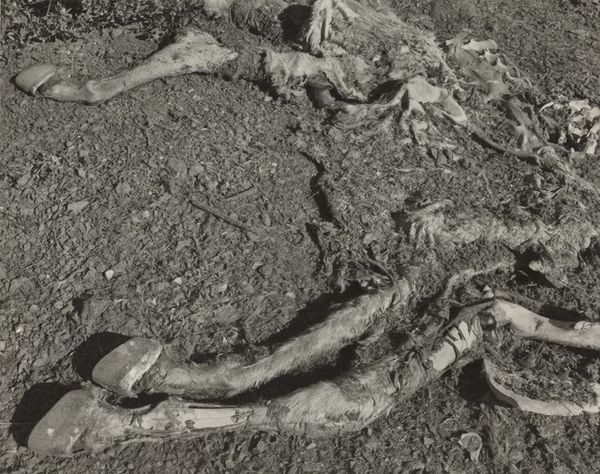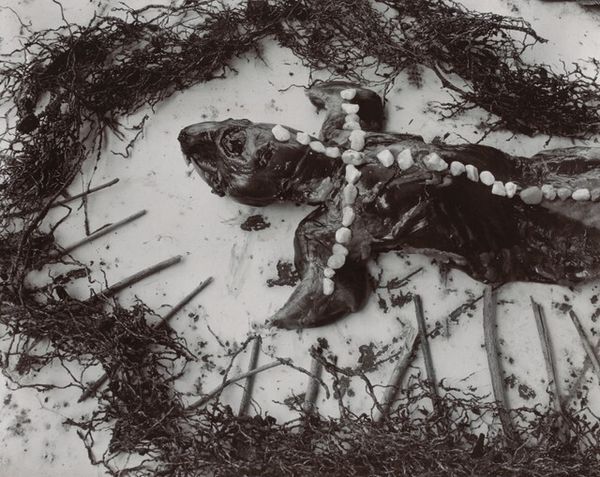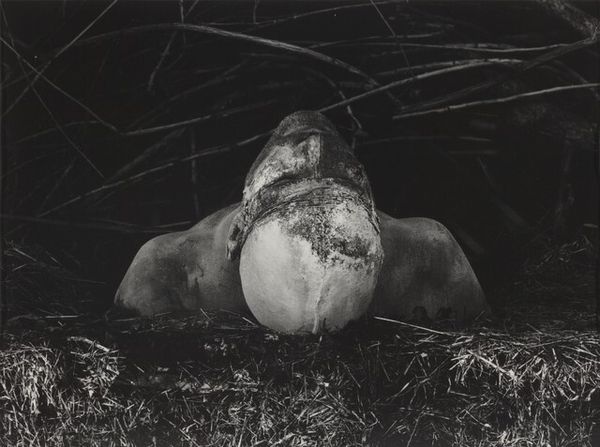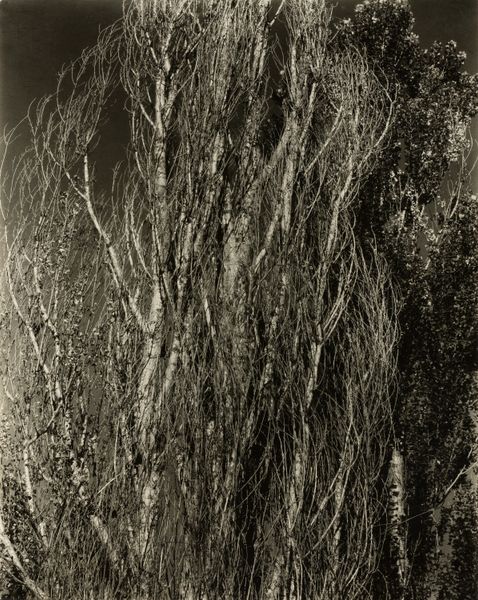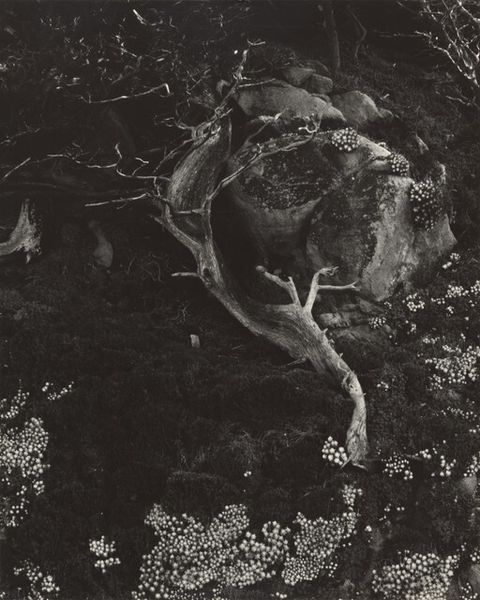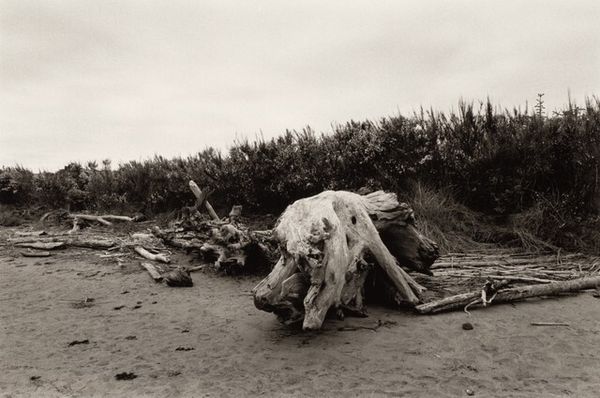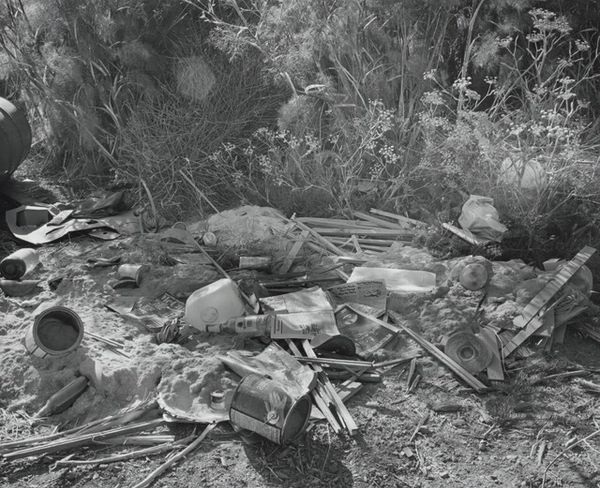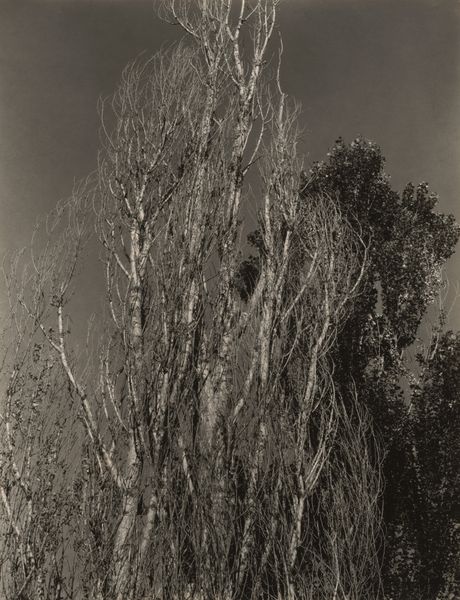
Dimensions: image: 23.9 × 16.1 cm (9 7/16 × 6 5/16 in.) sheet: 25.4 × 20.2 cm (10 × 7 15/16 in.)
Copyright: National Gallery of Art: CC0 1.0
Curator: Immediately, I'm struck by the suffocating nature of the composition. It's a monochrome study of objects completely enveloped in plastic wrap. The contrast is beautiful and chilling at the same time. Editor: We’re looking at "Morphe #15," a black and white photograph made in 1975 by Jo Ann Callis. It represents a pivotal moment where still life meets the cool detachment of conceptual photography. Callis often explored themes around objecthood and surface. Curator: The repeated use of plastic wrap as a textural element—its industrial gleam against what seems to be organic material underneath—is fascinating. It reminds me of mass consumerism and how it handles food products, or maybe how bodies themselves are handled after life. Editor: Callis was definitely engaging with a shift in cultural perception. The increasing ubiquity of plastics from the post-war era to the mid-70s shaped design and packaging significantly. Here, the artist uses it as a second skin, highlighting anxieties around containment. Remember, also, the art world’s broader turn toward examining everyday life through pieces like this. Curator: There's a tension between the seductive shininess of the plastic and this vague feeling of something being trapped, silenced almost. What can you tell us about its institutional context? How was photography perceived when she was doing this work? Editor: Museums and galleries at this time were opening their doors to experimental photography. Callis had several exhibitions then, suggesting "Morphe #15" was likely received within discourses about challenging photographic representation. It asks questions around what photography *is*, blurring fine lines between documentation and artistic intent. Also, note the darkroom processes. Curator: Indeed, it’s almost as if she's wrapping the subject to make something entirely new through darkroom manipulations—pushing beyond straightforward photographic record to reveal ideas about transformation and the altered nature of seeing in the media age. I wonder how people understood those issues around gender, art production, and the female gaze at this period. Editor: I agree. Its artistic resonance resides in challenging traditional perceptions and artistic styles—how something simple like wrapping can question the production, control and art world consumption practices, inviting conversations about those structures in the current social arena. Curator: Looking at this image has definitely deepened my appreciation for how process can unveil unsettling yet poignant dimensions. Editor: Mine as well! And it underscores the potent roles art institutions played during crucial discussions.
Comments
No comments
Be the first to comment and join the conversation on the ultimate creative platform.
